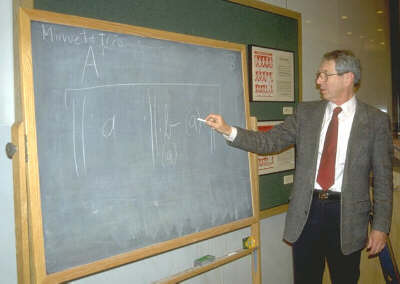
begin audio session; lecture 2, part 4:
Modulation and Binary Form



"What does the "E" and "X" mean in notation?" asked a member of the lecture hall audience.
"That is another aspect of binary form, and it's illustrated in the second example I played on the piano here...we started off in the tonic..." said Dr. Broyles, and began his explanation of the use of key changes in phrasing, and the difference between playing the dominant chord and playing in the dominant key.

The lecture continued with an explanation of
the A,B,A phrasing structure, known as "binary
form" with Dr. Broyles playing an example from
the opening of a minuet by Mozart, followed by an
explanation of the related but somewhat more
complex "ternary form".


